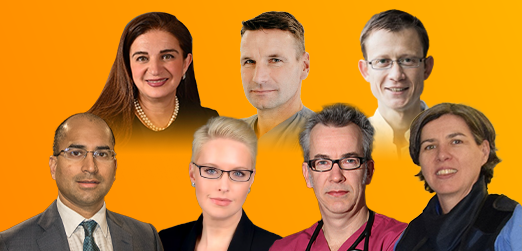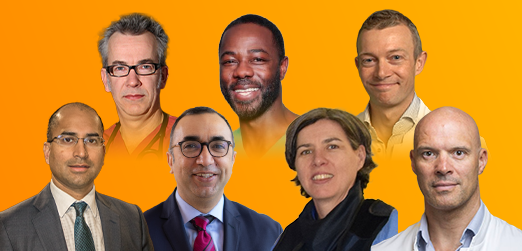- Home
- Rhythm Interventions Online 2020 - AF Ablation Made Simple: High Power Rf Ablation
Rhythm Interventions Online 2020 - AF Ablation Made Simple: High Power Rf Ablation
- Intervention
Available Credit:
- 1.00
Course Published On:
Course Expiry Date:

Overview
In this session Rhythm Interventions Online 2020 – AF Ablation Made Simple: AF Ablation Made Simple: High power RF ablation, Dr Boris Dinov performs a live case, with insight and discussion from an international faculty.
Rhythm Interventions Online (RIO) is a new innovative virtual event that will bring together a leading international faculty to create a rich, interactive experience to best inform the global electrophysiology community of the latest developments and advances in clinical practice.
Led by Course Director, Prof Richard Schilling, Barts Heart Centre, London, and delivered through a crafted programme of discussion, opinion, and live cases from leading international centres, RIO will comprise twelve hours of best-in-class learning.
Disclosure
In compliance with EBAC / EACCME guidelines, all speakers/chairpersons participating in this programme have disclosed or indicated potential conflicts of interest which might cause a bias in the presentations.
The Organising Committee/Course Director is responsible for ensuring that all potential conflicts of interest relevant to the event are declared to the audience prior to the CME activities.
This programme is supported by the following:
Educational Partner
· Boehringer Ingelheim
Headline Partners
· Medtronic
· Boston Scientific
· Abbott
Supporting Partners
· AtriCure
· Biosense Webster
· EBR Systems
Terms & Conditions
Radcliffe Education requires contributors to our CME programmes to disclose any relevant financial relationships that have occurred within the past 12 months that could create a conflict of interest. These will be identified in the faculty section if applicable.
The session, ‘Rhythm Interventions Online 2020 – AF Ablation Made Simple: High power RF ablation’ is accredited by the European Board for Accreditation in Cardiology (EBAC) for 1 hour of external CME credits.
Each participant should claim only those hours of credit that have actually been spent in the educational activity. EBAC works according to the quality standards of the European Accreditation Council for Continuing Medical Education (EACCME), which is an institution of the European Union of Medical Specialists (UEMS).
Through an agreement between the European Board for Accreditation in Cardiology and the American Medical Association, physicians may convert EBAC External CME credits to AMA PRA Category 1 Credits™. Information on the process to convert EBAC credit to AMA credit can be found on the AMA website.
Instructions to Participants
There is no fee for taking part in this online learning activity.
Activities are designed to be completed within 60 minutes and must be completed by the registered user. Physicians should only claim credits for time spent on the activity. To successfully earn credit, participants must complete the activity in full in the indicated time frame.
To complete the course and claim certification participants must:
- Read the course outline information supplied and complete pre-test questions if supplied prior to starting the activity. Users must read and study the activity in its entirety before completing the post-test questions.
- Your results will be automatically saved and if a pass score is achieved (where applicable), you may be eligible to claim credit for the activity and receive a certificate of completion.
Target Audience
This programme is intended to educate:
- Electrophysiologists
- Arrhythmologists
- General cardiologists
- Cardiac catheterization technologists and technicians
- Physiologists
- Device Implanting Specialist
Learning Objectives
The overall programme, Rhythm Interventions Online 2020, endeavours to best address the following learning objectives:
- Discuss the merits of using ablation in the day surgery setting and as a first-line treatment for atrial fibrillation
- Summarise recent clinical data on emerging ablative techniques for atrial fibrillation and ventricular tachycardia (VT)
- Recall how to carry out ablative procedures including fluoro-free ablation, high power ablation, ablation of structural heart VT, convergent ablation and ablation in atrial tachycardia
- Recall how to carry out leadless pacing and His bundle pacing for cardiac synchrony
Chair
Operator
Panelist














